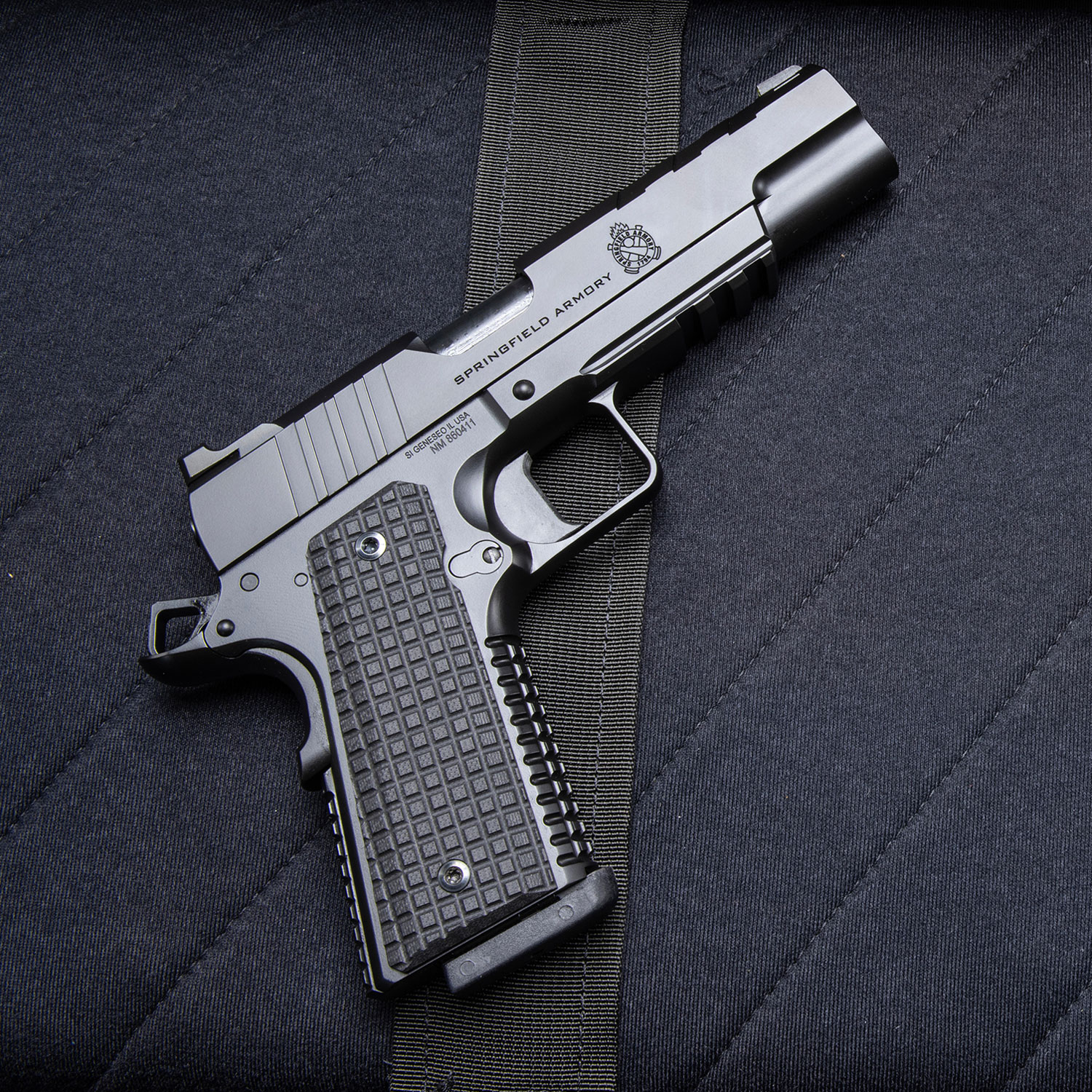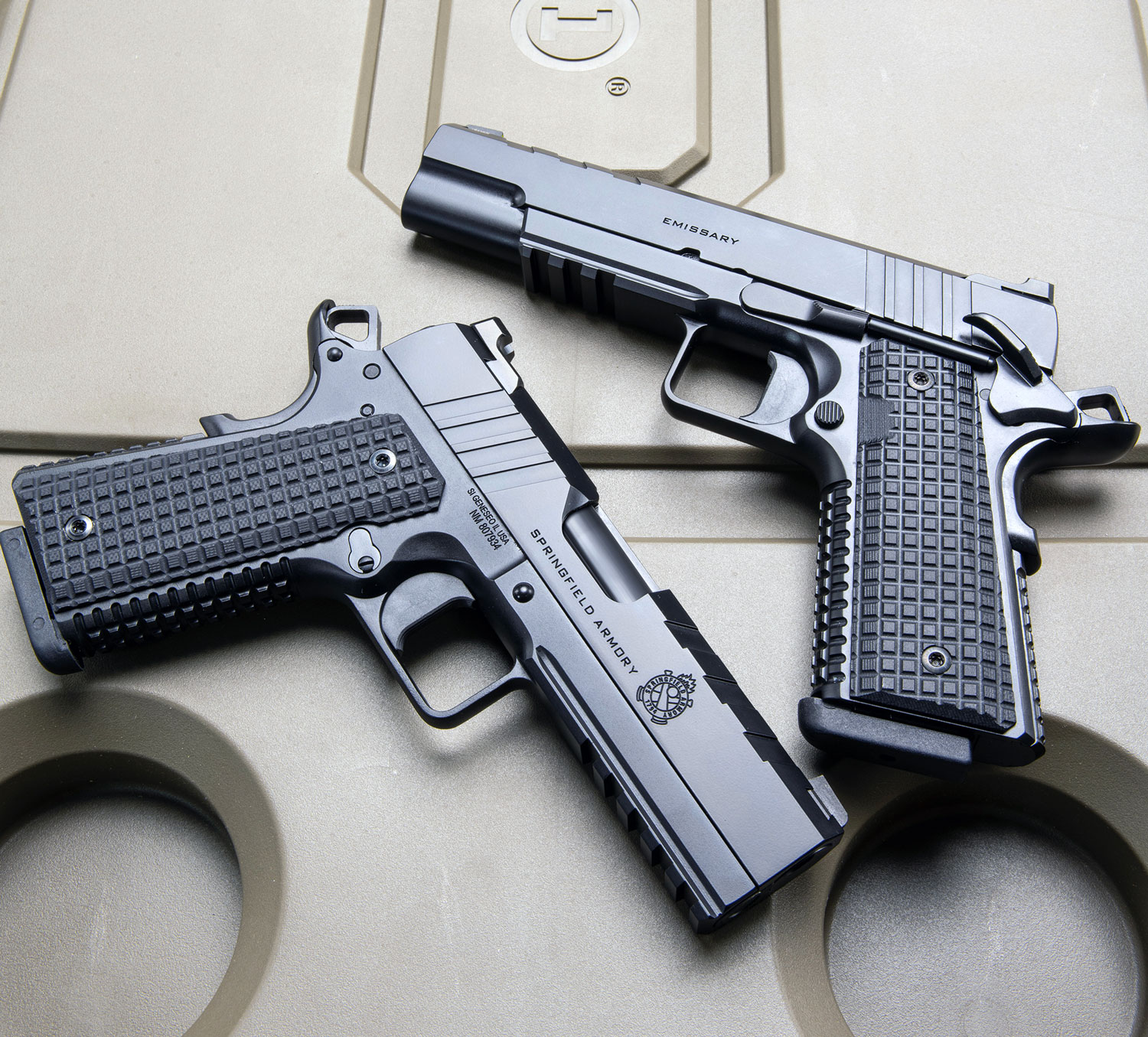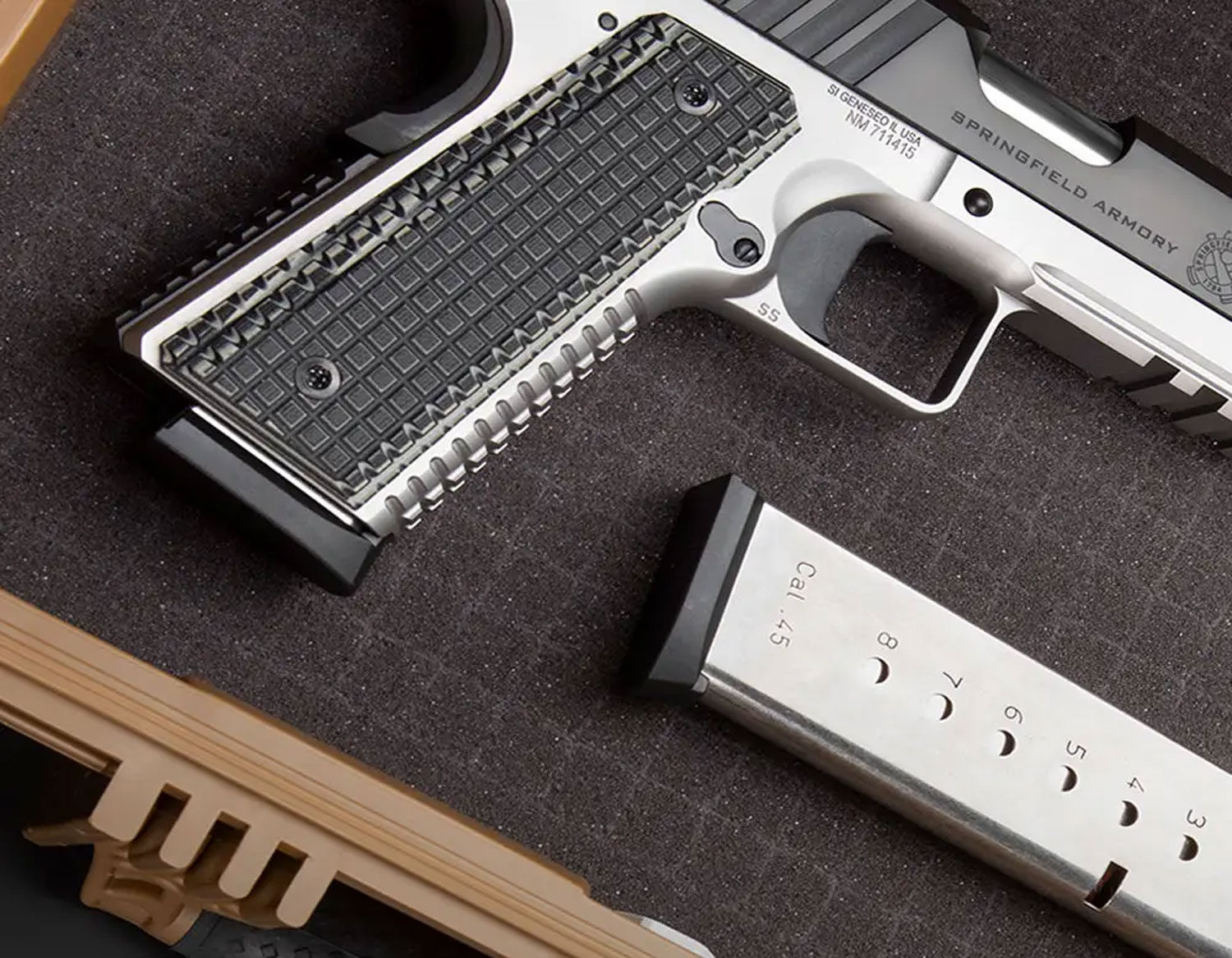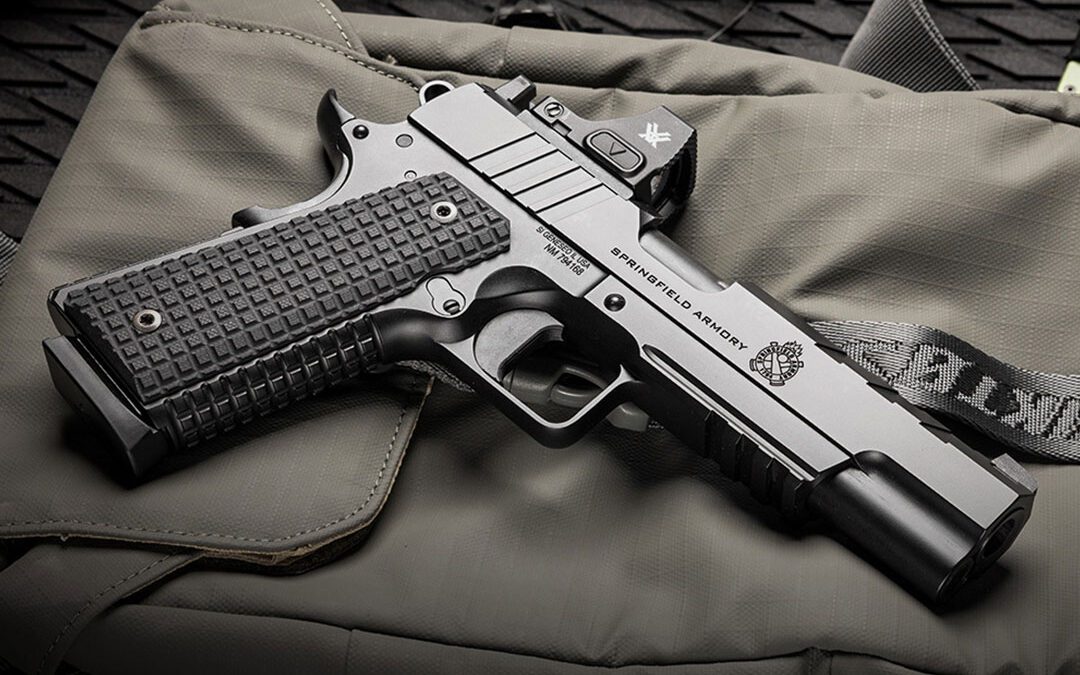Amazon got its start in a garage.
Google was started in a dorm room and eventually upgraded to a garage.
Today’s Springfield Armory beats them both— it got its start in a corn crib before eventually upgrading to building M1A rifles in a former diner.
The original Springfield Armory was, of course, started in 1777 under orders from George Washington as a place to store ammunition, and began manufacturing muskets in 1794. The U.S. government closed the armory in 1968, and in 1974 an Illinois farmer named Bob Reese, who also happened to be the former North American Junior Trapshooting Champion, resurrected the name. His son, Dennis, the oldest at nine years of age, and Dennis’ two younger brothers, would come home from school and divide their time between farm chores and salvaging usable parts from demilitarized guns their father purchased from the Rock Island Arsenal.
There is a valuable parenting lesson there.
Today, 50 years later, Dennis Reese is the CEO of Springfield Armory, and the company offers a dazzling array of rifles and handguns in calibers ranging from .22 to the 6.5 PRC. A lot of companies offer a dazzling array of firearms; the difference is that Springfield Armory’s handguns, the ones I’ve been privileged to handle, are marked by truly exceptional quality, by all standards.

Another early starter, John Browning, went to work at age six, salvaging metal parts for forging in his father’s gunsmith/blacksmith shop and, according to biographer Nathan Gorenstein, he built his first functional gun, by himself, at age 11 (other sources claim he was a decrepit old man of 13). Browning apparently only fired that first effort once. He not only survived, but he managed to ground-sluice three grouse with that single shot.
John Bowning was awarded 128 patents over his lifetime, all of them successful, surprisingly many of which are still used today. But his most revered and iconic patent, at least here in America, was the M1911 whose patent was granted on St. Valentine’s Day, February 14, 1911, an apt date for one of the most beloved handguns of all time.
Today, more than a century later, as we lurch into the age of artificial intelligence (or possibly no intelligence whatsoever) and laser weapons capable of vaporizing targets from outer space, many competitive shooters who qualify as household names still consider the M1911 the finest defensive handgun ever. Period. The military transitioned away from the M1911 after 75 years (75 years!) of service, yet some of the most elite and specialized military special operations units and police SWAT teams still prefer the old warhorse, or one of its many variants, to anything else. And it would be impossible to estimate how many concealed-carry permit holders would still rather trust their lives to a 1911 than anything else.
It’s also impossible to over-praise the virtues of the M1911. There are any number of handguns available today that are just as good, possibly better for you personally, but no other pistol has had such a profound influence on modern handgun technology or inspired as many great artisans as the handgun that helped Sergeant Alvin York win his Medal of Honor back in 1918.
And it is still being manufactured, with multiple variations and slight modifications and modernizations, by a host of companies, large and small. One of the best of those companies is Springfield Armory.

Springfield Armory offers 10 (or more, depending on how you count them) models of the M1911 or its first governmentally improved version, the 1911A1, with variations within most of those categories (full-size, Commander-size, different contours, with or without accessory rail, single stack, double stack, 9mm, 45 ACP, or 10mm—that sort of thing). Its newest offering is a color variant of the Emissary, with the new color being an all-black Cerakote finish. That may not sound like much but wait until you see it.
Perhaps because the first semi-auto pistol I ever owned was an M1911 (and what wouldn’t I give to have that back again!) I have a prejudice in favor of the lines, the outline, of the 1911. The ergonomics that make the 1911 so eminently shootable also make it, well, beautiful. Even a battered and beaten-up Army-issue 1911 looks better to me than anything else. But when you couple those ergonomics with a finish that looks like what you might expect on a custom shotgun from one of the great British makers, it transforms a serious defensive working tool into a thing of refinement.
But it’s not just the Cerakote finish. The slide has what Springfield calls a “tri-top cut,” as opposed to the traditional rounded slide, that gives a sort of racy, customized look. The top of the slide is flattened and serrated for light diffusion and glare reduction. The hammer is rounded and skeletonized and there is a pronounced bump at the bottom of the beavertail grip safety, something I find highly desirable, especially after several hundred rounds.

Which brings me to another detail, both functional and aesthetic, that caught my eye: the VZ grips—a proprietary variant of VZ’s “FRAG” grips—have an aggressive pattern like the pattern on a hand grenade; not at all uncomfortable, but aggressive enough provide a secure grip, even with sweaty palms. The front and back straps of the forged stainless-steel frame are both checkered in the identical hand grenade pattern, and the two patterns match precisely, with all the horizontal lines on the grips perfectly meeting the cuts on the frame. It’s the kind of attention to detail one finds on classic British shotguns, where the slots on all the screws are timed with the precision of the King’s guard at Buckingham Palace. Does that improve the function of the firearm? No, but that kind of attention to detail speaks of attention and precision in internal places where function is affected.
Springfield sent me two pistols: a full-size 45 ACP and a 4.25-inch 9mm, both of them built like bank vaults, rock-solid and substantial in my hand. That’s not surprising, given that frame, slide and barrel are all made of forged steel; no alloy here. Yes, that does make the guns heavier than many comparable modern defensive pistols (the 9mm weighs 42 ounces, the full-size 45 ACP one ounce more) but that weight also mitigates recoil dramatically. Even with iron sights, I was able to speed up my second shots on double taps, and both my second and third shots on the Mozambique drill. Both guns have heavy-profile bull barrels for accuracy.
Those iron sights are easy to use, even for aging eyes: a tritium/luminescent front and a tactical-rack U-notch rear sight outlined with a white line. I have always preferred plain rear sights, and when I saw that white “U,” I had my doubts, but by golly, I loved ’em! The size of the “U” and the distinctiveness of the outline made it easier to pick up my front sight.
The Emissary comes with a solid, flat trigger protected by a squared-off guard. I have no intention of debating the advantages and disadvantages of flat-versus-curved. What I care about is the smoothness of the trigger when pressed, and the amount of weight required for the sear to break and the hammer to fall. On the 9mm, the trigger broke consistently at 4 pounds, 3 ounces. On the 45 ACP, it broke consistently right at 4 pounds, 2 ounces. On both guns the break was sharp and smooth and reset minimal.

Note the use of the word “consistently.” One of the great advantages of the 1911 platform is that because the gun is a single-action designed to be carried cocked-and-locked, trigger press will always feel the same throughout the shooting process. As to the weight of trigger, I’m a timid fellow and I get nervous whenever trigger-break drops down too much below 4 pounds. In today’s world, it doesn’t matter if you’re defending your wife and children from an insane escaped felon with a running chainsaw in your own home: every bullet that leaves the barrel of your gun will cost you enormous amounts in legal fees, and the last thing you want is for that trigger to get away from you.
And when you press that trigger, you want the gun to go bang every time, without fail. Reliability is critical and some pistols are finicky about what they will or will not shoot, so if you plan to use a pistol for defensive purposes, it is critical you run whatever defensive ammo you might consider using and find out in advance of an emergency what it likes and dislikes.

I put a wide range of ammo through both guns: lots of full-metal-jacket training ammo and various configurations of defensive ammo, all of different weights by different manufacturers. All of it was good factory ammo because it doesn’t make sense to me to risk a fine gun and possibly my fingers shooting cheap stuff, but I never once had a malfunction of any kind with either gun and, between the two of them, I shot several thousand rounds. For new guns, right from the manufacturer, that’s an impressive statement.
The other factor in reliability is how the gun is held during firing. We’d all like to have enough time to draw the gun and assume the secure two-hand grip we’ve practiced thousands of times, but bad things frequently occur very quickly at very close distances. In addition to various standard drills, I also practiced shooting one-handed, both from the hip and extended. I deliberately used the 45 ACP to see what effect the recoil might have on an arthritic hand and, more importantly, what effect an arthritic hand might have on function. It didn’t. “Limp-wristing” is the easiest way to cause a malfunction with a semi-auto pistol, but I kept it up until I got bored without achieving a single stoppage.
Accuracy. All well-made guns leave the factory capable of greater accuracy than their eventual owners are capable of achieving. Accuracy at 25 yards from a benchrest is one way of judging a pistol’s performance, but accuracy off-hand is a more reliable indicator of how the gun will perform in a real-world situation. From a rest, Springfield’s 45 ACP provided a 2-inch group, while the 9mm came in at 3 inches. Off-hand at 25 yards, both the 45 ACP and the 9mm came in at 4 1/4 inches. With both guns, all groups were very slightly to right of the bullseye, which basically only shows how one shooter’s eyes and hands might call for a mild tweaking of the sights.
More realistically, off-hand at 10 yards, both guns performed magnificently. The 9mm had a 1 7/8-inch group and the 45 ACP a 2-inch group. To quote an expression of satisfaction an old cowboy I worked with used when he had done something well, “If you don’t like that, you don’t like chocolate cake!”
Springfield describes the guns as “bridg[ing] defensive and custom pistols,” and that’s a perfect description: they look and feel like custom handguns, yet there is nothing extraneous or superfluous on them. It is possible to buy custom guns with elaborate finishes, gold inlays, engraving and grips made out of any number of exotic materials. I admire the workmanship and the artistry, but I lust after them as works of art, not as functional tools. Bridging those two is a delicate balancing act, but Springfield does it beautifully, and the Emissary is a sophisticated blend of aesthetics and superb function at a reasonable price.

